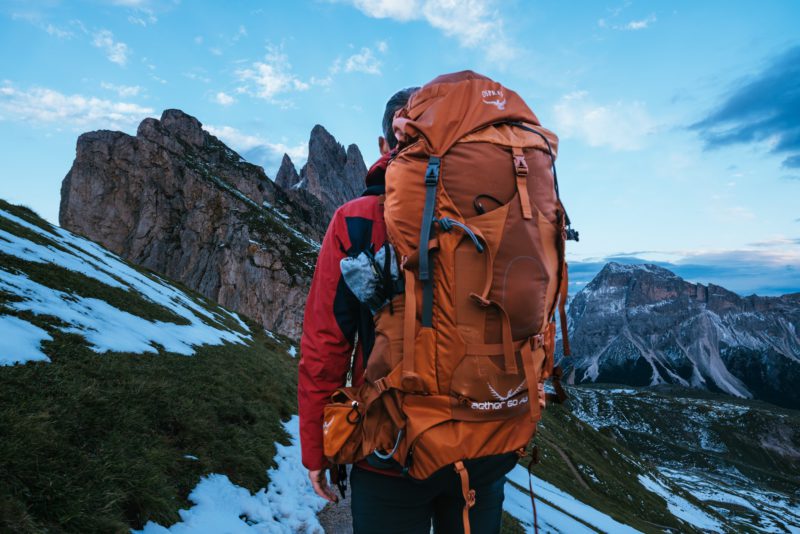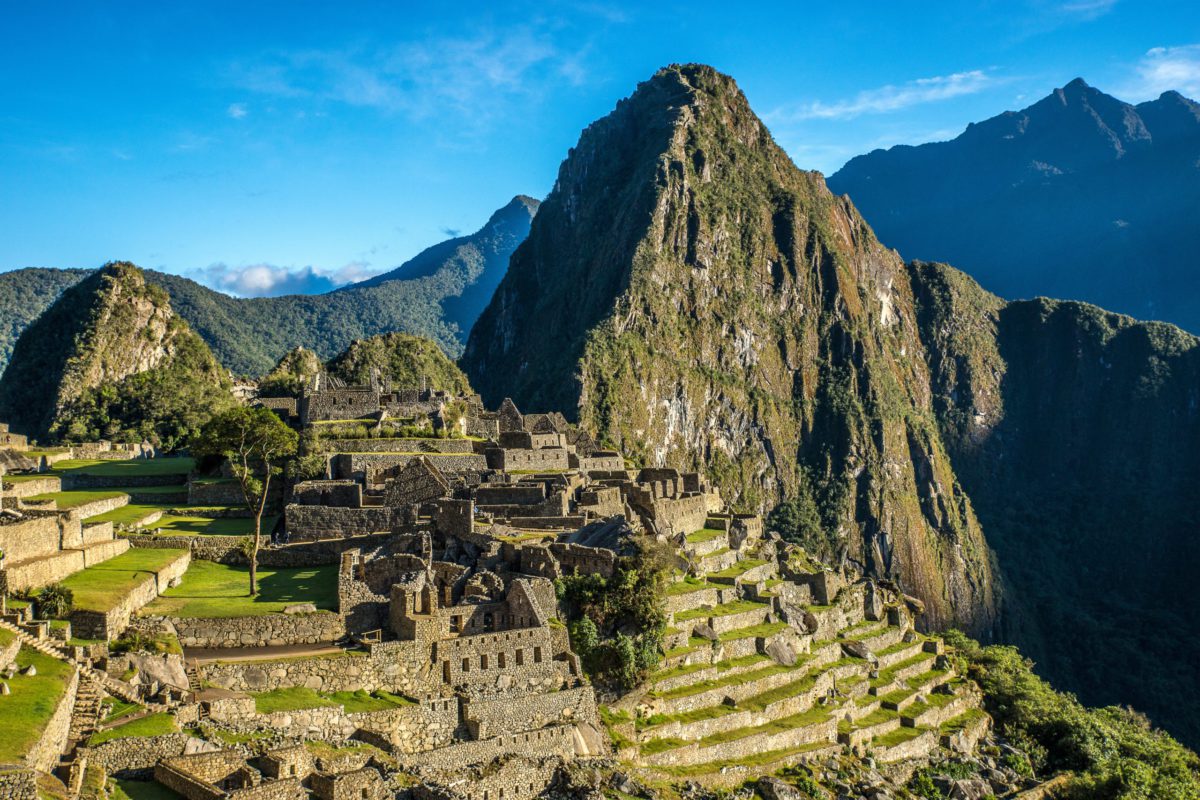Backpacking takes all shapes, sizes, and forms. For some, it means putting everything you need in a pack and hitting the literal road in your car. For others, it means fitting the essentials in your bag and flying across the globe. No matter where you’re headed or what you plan to do when you get there, learning to pack a backpack is essential to having a great trip. Check out this quick guide to maximizing your backpack space and become a backpacking pro!
Where are you going and for how long?
It’s super easy to overpack for any trip. There are times I’ve found myself with three bags for two nights of travel and had to reconfigure my plan before walking out the door. There seems to be this primal urge to take everything we own with us on our journeys.
While that may be possible for a few nights in the car, when it comes to overseas travel or travel that requires us to carry our pack with us at all times, our options become limited (unless we want to pay huge fees to fly with our closets or carry our weight in gear). To avoid that fate, there are two important questions when it comes to packing: where are you going and for how long?
Location
Your location is important for obvious reasons, as it will ultimately determine what you need to pack. There are a few things to consider when researching the location.
- Weather: First, research the weather patterns for your specific travel dates and the month you plan to travel. You want to know as best you can what it will be like while you’re there. You can start by googling weekly and monthly weather in the location(s) you’re traveling to and research average temps. Another good idea is looking at the travel blogs of people who have been to that location. They can offer insight on temperature, humidity, precipitation, and what it was like during their stay.
- Activities/excursions: The next thing you want to consider is your activity level. Do you want to sit on a beach, trek up a mountain, sightsee in the city, or all of the above? What you plan on doing during your getaway will be a direct reflection of your packing choices. For some helpful tips and insight into your location, reading travel blogs or Tripadvisor reviews for excursions can help you decide what you’ll need for your stay. They may have items listed you never thought to bring!
Duration
Once you determine a location, you need to consider how long you’ll be away. There’s a huge difference between a one-week trip in a single location and a month-long backpacking trip that will include multiple countries. More days on the road means more days in the same clothes. Will you have access to laundry facilities? Are you planning on buying certain items during your journey? Can you keep it casual, or do you need a fancy outfit? These are important questions to consider as you map out your trip.
What to pack for your trip
Every backpacking trip will be different. If I were to trek through Patagonia, my backpack would look vastly different from a pack that was going to Thailand for two weeks, but there are a few essentials that every pack should have:
- Underwear: For the ladies, one per day is reasonable, but packing a few extra never hurt anybody, especially if you won’t be able to do laundry on the road. For dudes, one pair for every two days should suffice, but honestly, it’s whatever you’re comfortable with.
- Long sleeve/sweatshirt: Even if you’re traveling to a warm location, between the plane and the hotel, it never hurts to have one piece of clothing to keep you warm.
- Appropriate footwear: Choosing the right footwear for a trip is essential, especially if you are hiking or are planning to walk instead of drive. Always wear your biggest/heaviest shoes on the plane and pack the rest to save space. If you can stick with two pairs of shoes for your entire trip, you’re golden.
- Small bag: Since you don’t want to bring your main bag everywhere you go, bringing a small, foldable backpack is a great idea, especially for those who are looking to wander around cities or take day hikes. This item can also help you reduce your bag weight at airports since you can use it as your carry-on. When it’s not in use, fold it up and stick it in your pack!
- Reusable water bottle: It’s important to know if you can drink the water at the locations you’re traveling to, but most campsites and countries have water fountains and usable tap water that will not only save you money by forgoing plastic water bottles but can help you save the planet, too! Clip this item to the outside of your pack and you’re good to go. (Some packs have a sleeve for water bottles. Check the size before purchasing.)
Clothing and accessories
With this list, you’ll have the obvious items such as tanks and tees, shorts and pants, dresses or formal wear (if applicable), along with any extras, such as ties, jewelry, coats/sweaters, and the like. If you can help it, try to bring items you can reuse throughout the trip that can easily mix and match with other articles of clothing. Dark colors help to conceal stains/wrinkles and typically go with anything you pack.
Depending on the size of your pack, you can only fit about two to threes types of each item comfortably. Map out how many days you’re on the move and see how many times you can wear each item to decide how many shirts, pants, et cetera you should bring. However, the weather may change your checklist. Here are a few weather-based essentials to help you pack smart and light.
Warm weather
For warm-weather trips, here are a few essentials for your pack:
- One to two bathing suits (depending on duration and activities)
- Sun shirt with SPF
- Hat
- Sunglasses
- Appropriate footwear (flip flops, sandals, sneakers)
- SPF and aloe (depending on your location, you could buy these on-site)
Cool weather
For cool weather trips, here are a few essentials for your pack:
- Long-sleeve tee
- Sweatshirt
- Long underwear (depending on temperature)
- Winter hat
- Gloves
- Scarf
- Cozy socks
- Appropriate footwear (snow boots, hiking boots, rain boots)
- Chapstick
- Hand warmers (depending on temperature)
The extras
This is where things can get heavy. While there are some extras we can’t go without, others need to stay home. Here are a few common items that most will need on any trip:
- Phone charger, adaptor(s), and battery pack (if camping/trekking)
- Earbuds (don’t bring bulky headphones)
- Essential toiletries (toothbrush, toothpaste, haircare/brush, lotion, medications)
- One book or an eBook tablet (best option for long-term travel)
- Bag lock
- Travel towel (depending on location and activities)
The must-haves for efficient and effective backpacking
Image above by Jordan Tarver
- Compression bags: The number one purchase for efficient backpacking is compression bags. These quick-seal items can help you save a ton of space, especially if you like a lot of clothing options when you travel. Various travel companies and retailers offer these bags in all different shapes and sizes but most zip shut just like a Ziploc bag. You can either lay on top of the bags to remove the air or roll them to release the air and seal them shut. For most backpacking bags, you can fit three to five compression bags easily in your pack. These will literally give you more space than if you were to use the rolling method alone and help you organize types of clothing/accessories.
- Travel-size toiletries: The second must-purchase item for backpacking are travel-size toiletries. There is no reason to take full-size anything on the road, especially if you are flying overseas. (The airline limits your fluid amount anyway.) Most companies offer travel versions of their products, but for the few that don’t, you can buy plastic containers at pharmacies and grocery stores and transfer your favorite products for your trip.
- High-quality clothing: The last must-purchase isn’t one item but a genre of item. At most camping and trekking stores, such as REI, North Face, and Patagonia, you’ll find regular items that are better quality than your usual underwear, socks, and clothing. For example, these brands carry clothing that features moisture-wicking, fast-drying, and odor-blocking materials that can keep you warmer or cooler depending on location. You’ll get more wears out of these items before washing, and most items can be washed right in your hostel/camp sink.
Final thoughts
Everyone’s needs will be different when it comes to backpacking, especially when it comes to location and weather, but the goal is to take only what you need and focus on the beauty of the location around you. While I know nothing about Coco Chanel, I know she said, “before you leave the house, look in the mirror and take one thing off. It is always better to be underdressed”. The same is true for backpacking. Look at your pack, take a few things out before you leave the house, and focus only on what you need. You’ll thank yourself on the road!
About TourHero
TourHero is a social travel platform that enables you to travel with like-minded people and fall in love with the journey. We work closely with handpicked local operators to ensure every experience curated is unique and exclusive to your travel group. Come with us on epic adventures and create memories that last a lifetime. Get started here!










